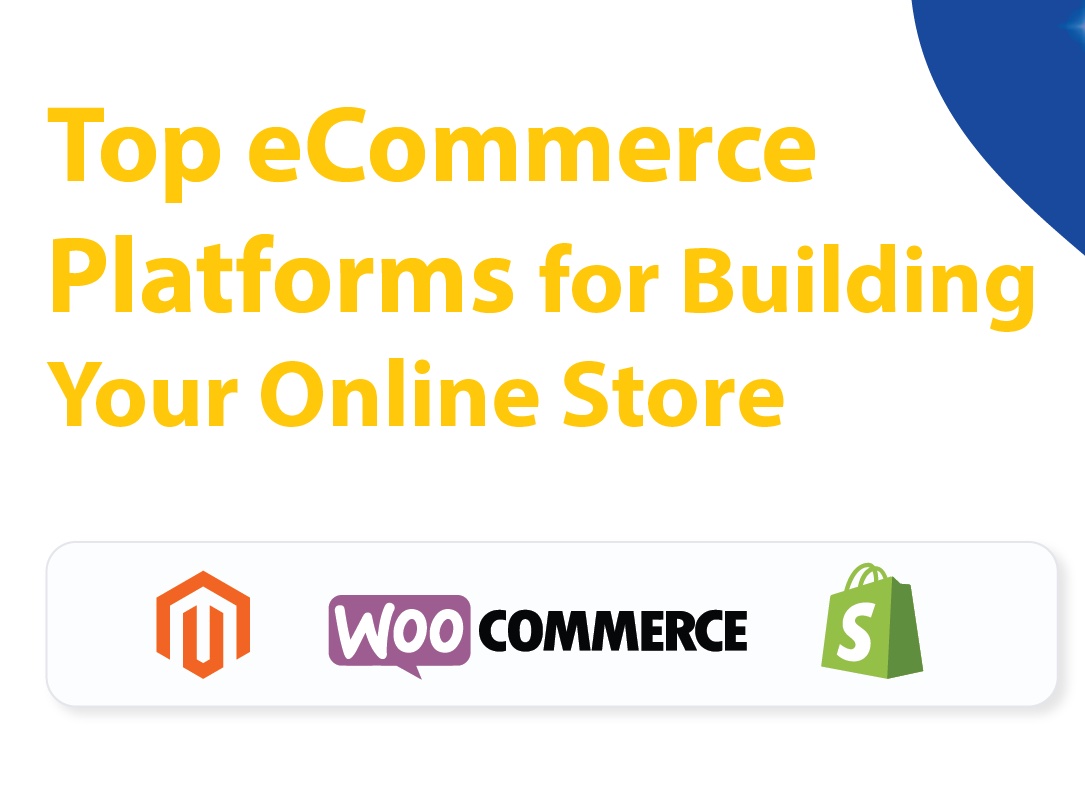
In the current technology scenario of the country. Having an eCommerce business is just one of the ways of being at par with inflation. To have a successful eCommerce business, having an eCommerce development service available when necessary is imperative. These services help the business in maintaining and updating the face through market fluctuations and consumer needs. There are many platforms available to build and create your online store.
1. What are the options available for eCommerce development?
To develop an eCommerce store, there are several options available according to the product’s requirement and demand. Each option used is to increase the users experience and engagement towards store/website. Here are few common options which are necessary to start with:
· Custom Development – This involves building an eCommerce website from scratch and providing flexibility and control over the design and functionality of your online store.
· ECommerce Platforms – These are pre-bult platforms which provide you with a range of features and tools to create and manage the store.
· Content Management Systems (CMS) – Some CMS platforms have options allowing you to integrate shopping cart and payment facility within your website. This will help the eCommerce store to grow over time, it will support the website to collaborate, have quick and easy updates and offer templates and other extensions to customize your site.
· Headless commerce – is an e-commerce architecture where the front-end (head) is decoupled from the back-end commerce functionality and can thus be updated or edited without interfering with the back end, also like a headless content management system (CMS).
· Open-Source solution – Open-source fosters ingenuity; programmers can use pre-existing code to improve the software and even come up with their own innovations. Open source comes with a built-in community that continuously modifies and improves the source code.
· Mobile Commerce (mCommerce) Solutions – If you primarily target mobile users, you can consider developing a dedicated mobile app for your eCommerce business. Mobile app development frameworks like React Native, Flutter, or native development can be used for this purpose.
· Third-Party Integrations – You can leverage third-party tools and services to add eCommerce functionality to your existing website or application.
2. What is Magento, Shopify and WooCommerce?
The mentioned names are all eCommerce platforms used for building an online store for merchants.
· Magento is an eCommerce platform built on open-source technology which provides online merchants with a flexible shopping cart system, as well as control over the look, content and functionality of their online store.
· Shopify is a popular e-commerce website builder that small businesses can use to build online stores or sell products on third-party marketplaces or social media platforms. Shopify also sells point-of-sale, or POS, software that small businesses can use in their brick-and-mortar stores.
· WooCommerce is a free plugin to create an online store on WordPress. It provides a full range of complete e-Commerce features. With this plugin, users can easily display products for sale and can be customized on the online selling website according to their wishes.
3. What are the different pros and cons of above-mentioned technologies?
According to the research and data collected through the users the Pros and Cons of the technologies are listed below:
MAGENTO
Pros:
i. Robust and scalable platform suitable for large-scale e-commerce businesses.
ii. Highly customizable with extensive features and flexibility.
iii. Offers powerful marketing and SEO capabilities.
iv. Supports multiple stores and languages.
v. Open-source platform with a large community for support and extensions.
Cons:
i. Complex and resource-intensive, requiring technical expertise to set up and manage.
ii. Higher development and maintenance costs compared to other platforms.
iii. Requires a dedicated hosting environment for optimal performance.
iv. Steeper learning curve for beginners and non-technical users.
v. Limited out-of-the-box themes and designs, often requiring customization.
SHOPIFY
Pros:
i. Easy to set up and use, suitable for beginners and non-technical users.
ii. Hosted solution with reliable infrastructure and security.
iii. Extensive app store with a wide range of integrations and extensions.
iv. Provides excellent mobile responsiveness and speed.
v. Offers 24/7 customer support.
Cons:
i. Limited customization options compared to open-source platforms.
ii. Transaction fees on certain payment gateways if not using Shopify Payments.
iii. Monthly subscription costs can add up, especially for larger businesses.
iv. Advanced features may require additional paid apps.
v. Limited access to the backend code, which can restrict certain customization options.
WOO COMMERCE
Pros:
i. Built on WordPress, which is widely used and offers flexibility and customization options.
ii. Open-source platform with a large community and extensive documentation.
iii. Seamless integration with WordPress plugins and themes.
iv. Provides control over data and hosting environment.
v. Scalable and suitable for both small and large e-commerce stores.
Cons:
i. Requires technical knowledge or assistance to set up and maintain.
ii. Can be slower and less performant compared to other platforms.
iii. Additional costs may be incurred for essential extensions and premium themes.
iv. Limited official support options compared to hosted platforms.
v. Security vulnerabilities can arise due to plugin and theme compatibility issues.
CUSTOM DEVELOPMENT
Pros:
i. Allows you to create an unique personalized user experience for the customers.
ii. Provides you flexibility and scalability to adapt your growing business needs.
iii. Customization gives a huge competitive advantage.
iv. Allows you to implement robust security measures.
v. Helps you to integrate with external systems making it more user friendly.
Cons:
1. Higher cost and development time.
2. Maintenance and support might be a difficult process to source in the existing market.
3. There is a cost of over engineering requirement compared to the pre-built options.
It’s important to note that the suitability of each platform depends on your specific needs, technical expertise, budget, and the scale of your e-commerce business.
4. How to identify which platform is correct for your requirement?
There are several platforms which provide the user with different options in exchange for requirements provided by the brands. One must take all the factors into consideration to begin the eCommerce journey.
Few are listed below:
· Hosting and Platform ownership.
· Cost of Ownership.
· Integrations
· Themes and User Experience (UX)
· Platform’s speed and scalability.
· Ease of use and store functionality.
· Platform Security
· Multiple Payment Gateways support
· Personalization
· Mobile-friendly.
· Order Management System
· SEO Friendly.
E-commerce application development demands a systematic approach and credibility to achieve all the requirements necessary for a successful project. A collaboration with open communication caters both the quality of project and the output expected by the companies. Every project is different and hence identifying the requirements and implementing intuitive solutions is imper

